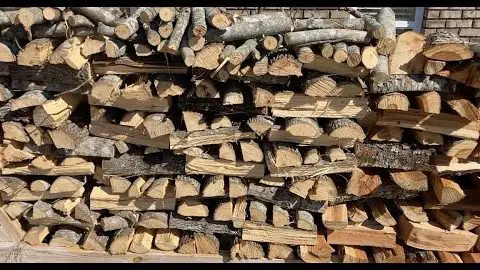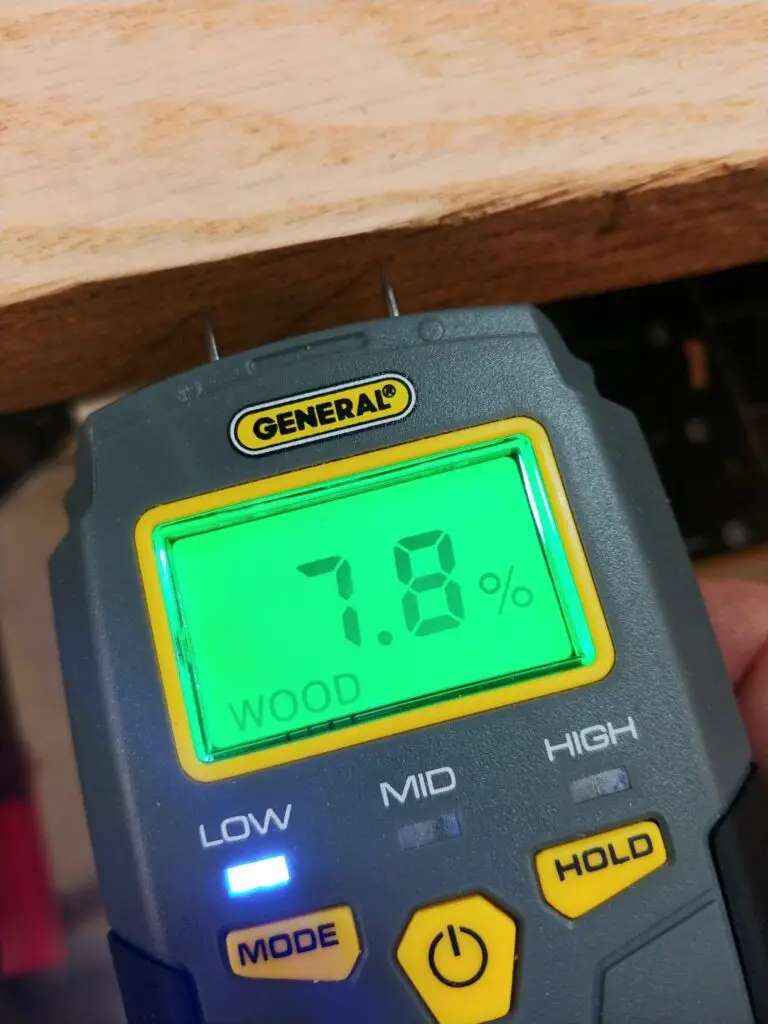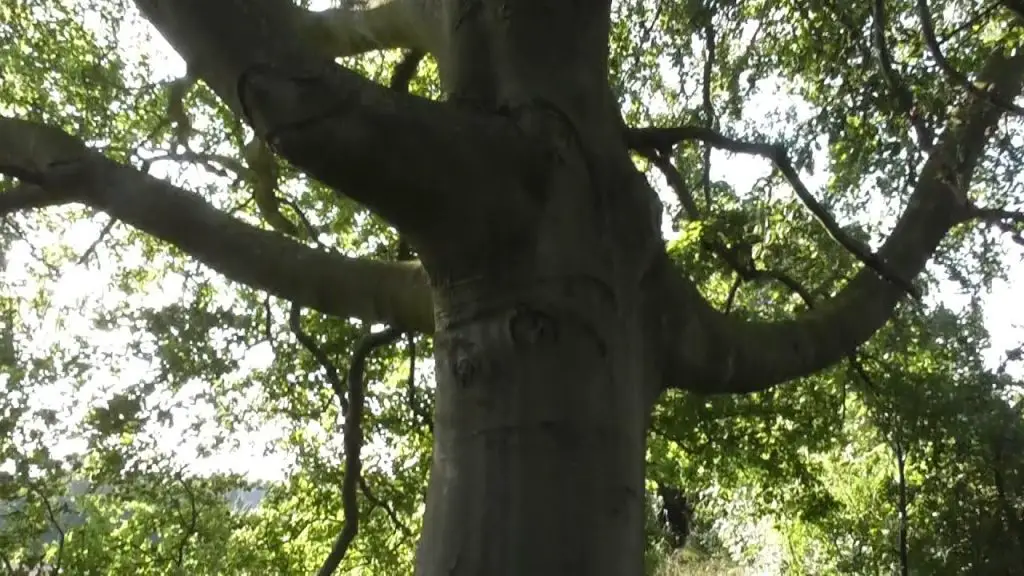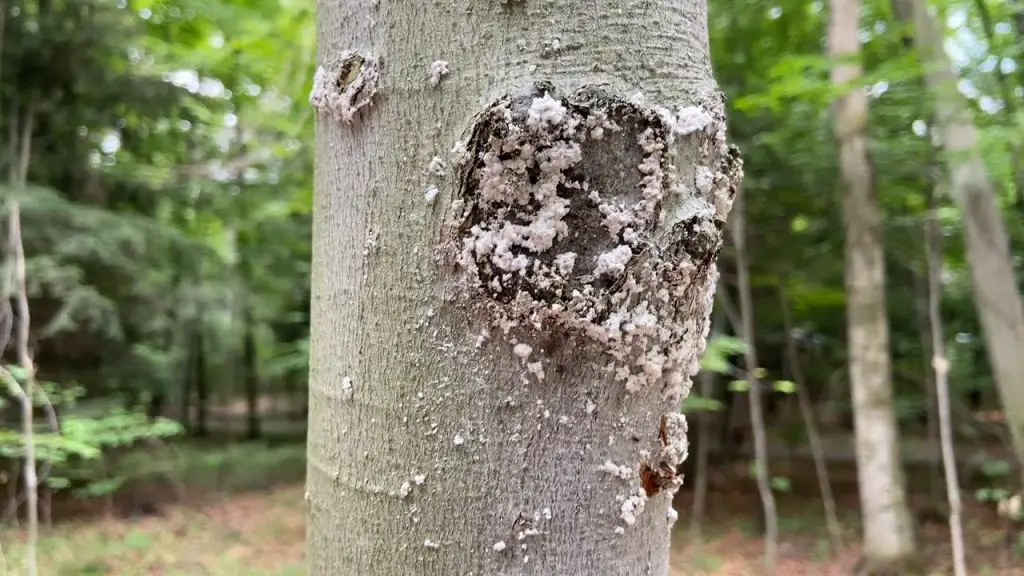Beech firewood is among the top favorite firewoods for your home, including oak, hickory, and ash. This is because of its excellent coals, high BTU, and low smoke production.
However, be aware that splitting beechwood can be quite a difficult task. But those who do it say it’s worth the effort in the end. This extremely dense hardwood will be a joy to burn in your stove, fireplace, or firepit.
Table of Contents
Summary
- BTU: 27.5 million
- Weight: 3760 lbs/ft3
- Smoke: Low
- Smell: Pleasant
- Splitting Difficulty: Difficult
- Seasoning Time: 1-2 years
Overall, beechwood is a good source of firewood that produces a lovely fragrance, good coals, and very little smoke.
However, processing beech firewood can be difficult because the trees are often hollow, making splitting a pain.

Heat Production
British Thermal Unit, or BTU, measures the heat produced from any source. You will also see this unit of measurement on air conditioners, space heaters, and gas firepits. Beech firewood produces 27.5 million BTUs per cord.
Compared to other hardwoods, beechwood is among the ranks of black locust, hickory, and oak. Beechwood is great because it’s a high-density wood and naturally has low moisture.
Beech also produces high-quality coal, which is excellent for keeping your stove warm overnight or while you’re at work. The coals are also great to use to restart the fire quickly. However, one of the complaints about beechwood is that it is hollow, so sometimes you do not get as much coal as expected.
Smoke Production
One of the things that makes beechwood a joy to burn is that it produces a meager smoke amount. Of course, green beech firewood will smoke more than seasoned, but both are still low producers than other woods such as pine.
Beechwood smoke has a nutty quality, and you can use it for smoking foods.
Beech firewood also produces very few sparks, making it a favorite for fireplace and wood stove users.
Seasoning Time
Seasoning beechwood will, on average, take one full year. Just like other hardwoods, it takes longer to season beechwood because of its high-density grain.
Others say that beechwood will need two years to season to reach maximum heat production. This will depend on the climate in which you live and how you store your firewood.
Some see the length of time you have to season beech firewood as a significant downside. Other hardwoods will take 6-9 months to be ready for burning, in comparison to beech’s 12-24 months.
No matter your climate or storing techniques, the longer you season beech, the less smoke it will produce when it’s burned.
I personally recommend this General Tools Moisture Meter. It allows you to accurately gauge how wet your firewood is and whether it is sufficiently seasoned. Over time you can also see how quickly the moisture is dropping and how much longer you need to keep your firewood dropping until it is seasoned and ready to burn.
Press the sharp pins into the wood and you will quickly see the readout show the moisture ranging from 5% to 50%. It also has a Low/Mid/High indication depending on whether the wood is dry enough, so you don’t need to remember the actual values.

Burning Smell
Beechwood produces a very nice and pleasant smell, although it is faint. If you are looking for firewood with a strong pleasant smell, try other woods such as Cedar or Cherry. Beechwood may be too faint for those looking for a strong smell.
Creosote Buildup
Creosote is a dark brown tar deposited from wood smoke that can build up on the insides of your chimney walls. It contains tiny unburned particles of wood and sap found in smoke. Creosote can be extremely dangerous because of how flammable creosote is and will easily start a chimney fire.
Beech firewood has very little sap content, so it produces small quantities of creosote buildup.
Splitting
We’ve come to the biggest complaint of beech firewood – splitting. Splitting beech firewood can range from extremely easy to the most difficult. Sometimes, beech firewood will have an extremely straight grain that will split like cake, but others will be knotted, twisty, and so dense, that machines may struggle.
Some say that wild beech trees that naturally grow in the woods will have a much better grain and be easier to split. This is compared to a beech tree that has fallen in the backyard or as part of landscaping.
Some say that splitting beech with an axe is just not worth it and will only burn beech if they have a hydraulic splitter. If you do try splitting with an axe, try to work your way inward by placing your maul near an outer wall to start—the greener the beech, the easier to split.

Different Types/Species
Beech trees are native to Europe and the temperate climates of North America. However, beech trees now grow all over the world and include roughly 10 major species. Beech species are all hardwood trees. Their extreme density is unique to beech trees, which makes beech trees exceptional for furniture building and heating your home.
Here are some beech types that can be found:
American Beech – The most widely used and most popular, the American beech tree is often used as not only firewood but also furniture as well. These trees can reach heights of 100 ft and have dark green leaves that turn a vibrant yellow in the fall. American beech is outstanding firewood.
European Beech – Much like the American beech, the European beech tree has desirable qualities for firewood and furniture building. However, instead of its leaves turning yellow in the fall, they turn red-brown.
Chinese Beech – Chinese beech grows smaller than the previous two, reaching around 65 ft tall. It also has more of a bushy appearance, with branches growing all the way from the base to the top. The most common use of Chinese beech trees is for decorative purposes.
Japanese Beech – While the Japanese beech shares many similar qualities as the Chinese beech, it does grow a bit taller. It also divides at the base and has multiple branches. While also used for decorative purposes, the Japanese beech can also be found in furniture and sold as firewood.
Mexican Beech – Mexican beech trees grow the tallest, growing up to 130 ft. Because of its size and high-quality grain, Mexican beech trees are mostly used for furniture and are in high demand.
There are over 40 other species of hardwood trees that are similar to beech and are often confused as a beech species. These are called “false beech trees.”
You can identify beech trees by their oval leaves that are fairly small at 2-6 inches in length and come to a point at the end. The leaves are sometimes lime green, such as when they are young or in the spring. The leaves often turn dark green and always have a glossy appearance to them. In the fall, depending on the species of beech, the leaves will turn yellow, bronze, copper, or dark red-brown.
Due to the leaves’ beautiful fall colors and the smooth silver-gray bark of the tree, beech trees are ideal for landscaping. Beech trees grow in areas where there is fertile soil with good drainage.
Beech Bark Disease
When identifying beech trees, look out for Beech bark disease, or BBD, which is found on American beech. BBD is caused by the beech scale insect damaging the bark of the tree and eventually killing it.
In its early stages, a tree infested with BBD will appear to have a “white wool” on the trunk. At this time, you can still save the tree with insecticide. Eventually, the tree will start to grow a fungal infection from the damage without treatment. Cankers will appear on the trunk and continue to grow until the tree is girdled and killed.

Comparison to Other Woods
Here, I’ve taken some of the most popular firewoods to burn indoors and compared them to our topic of today, beechwood.
| Firewood | BTUs | Ease of Splitting | Coals | Overall Quality |
| Green Ash | 20.0 | Easy | Good | Excellent |
| Maple | 25.5 | Easy | Excellent | Excellent |
| Bur Oak | 26.2 | Easy | Good | Excellent |
| Beech | 27.5 | Difficult | Excellent | Excellent |
Compared to other firewoods, beech is a high contender with excellent BTUs and coals. Beech’s downside is the difficulty in which it is to split the wood. If given the option, some may choose an easier wood to split over beech.
FAQs
How do you identify beech trees?
Their smooth gray bark can most easily identify beech trees. You can also identify them by their rounded leaves that end in a pointed tip. The leaves will also show leaf grains that run parallel to themselves. Be careful, though; double-check yourself to make sure you’re not looking at a false beech tree.
Once beech has been dried and seasoned, the color of the wood will have overtones of pink or light orange in them. If you are seasoning beech wood and it starts to turn black, green, or blue, you may have a mold infection.
Can you burn beech firewood in a firepit?
Absolutely, and it may be a nice treat to burn beech in a firepit because of its low smoke production! However, some may say to save that firewood for inside only, just because its so nice.
Can you burn beech in a wood stove?
Yes, burning beech in a wood stove or fireplace is ideal.
How much does beech firewood cost to buy?
The price of beech firewood varies greatly depending on where you live. If you live in the northern states, beech is more available and therefore cheaper than in the south. However, be ready for high prices since hardwood firewood sells for a higher price tag overall.
Final Thoughts
If you have a felled beech tree, or you have a chance to grab some beechwood up, take that opportunity! Say you don’t have a hydraulic splitter? Now would be the time to rent one or borrow one from a buddy at the cost of a pizza and six-pack.
Enjoy the benefits of burning beech firewood, like its low smoke production, pleasant smell, and great coals, while you can.
